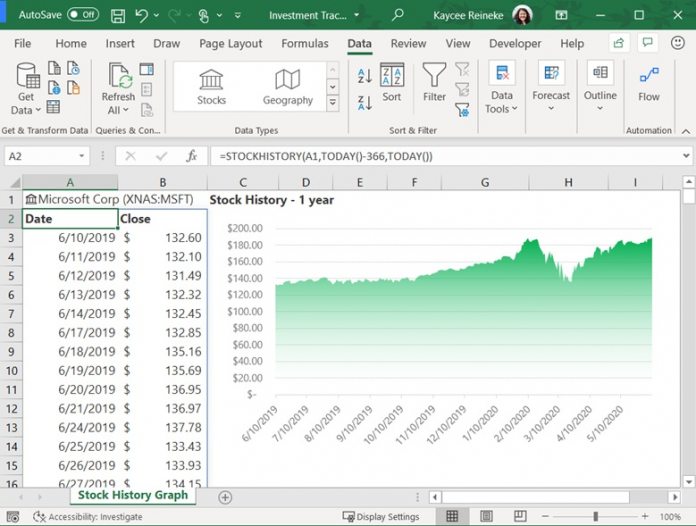STOCKHISTORY tops into the Stocks data type in Microsoft Excel and also the dynamic arrays ability that came to the app last year. As the name suggests, STOCKHISTORY will compile stock values from different dates and present them all in Excel. Dynamic arrays is an important part of the new tool. The feature allows formulas to output values across cells as a list: “Using dynamic arrays, any formula that returns an array of values will seamlessly “spill” into neighboring unoccupied cells, making it as easy to get an array of values returned as it is to work on a single cell. You can immediately harness the power of dynamic arrays by using one of the new FILTER, UNIQUE, SORT, SORTBY, SEQUENCE, SINGLE, and RANDARRAY functions to build spreadsheets that would previously have been nearly impossible.”
Details
In a blog post, Microsoft details the signature details of STOCKHISTORY in Microsoft Excel:
stock: The identifier for the financial instrument targeted. This can be a ticker symbol or a Stocks data type. start_date: The earliest date for which you want information. end_date (optional): The latest date for which you want information. interval (optional): Daily (0), Weekly (1), or Monthly (2) interval options for data headers (optional): Specifies if additional header rows are returned with the array. property0 – property5 (optional): Specifies which information should be included in the result, Date (0), Close (1), Open (2), High (3), Low (4), Volume (5).
STOCKHISTORY is available to Microsoft 365 users in beta preview. However, Microsoft points out the tool is currently only available to 50% of users on the Office Insider Fast Ring on Windows. The company does not say how it decides which customers receive the ability first. Microsoft has been working on expanding the stock capabilities of Excel. Last year, the company announced a partnership with Refinitiv and Nasdaq. Under the partnership, those companies will bring real-time stocks to the Office app. Since then, users of Excel can track up-to-date stock information across major U.S. exchanges in Nasdaq and stocks data from Refinitiv.




